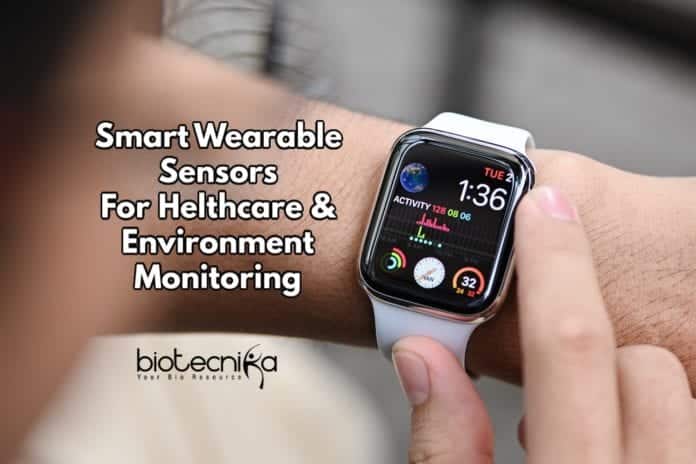Smart Wearable Gas Sensors For Environment Monitoring and Healthcare
A new generation of wearable gas sensors, developed by scientists may aid in detecting biomarkers for medical conditions and in monitoring environmental pollutants.
Unlike other devices of this type which needs an external heater, this device allows for quick recovery and resue and may become available commercially soon.
The researchers said, this device uses a self-heating mechanism that enhances the sensitivity and this highly sensitive device is an improvement on existing wearable sensors.
An assistant professor at the Pennsylvania State University in the US, Huanyu Cheng said, “Nanomaterials are mostly used for sensing because they are highly sensitive due to their surface-to-volume ratio.”
In a statement, Cheng said, “For receiving the signal, using nanomaterial is problematic because it is hard to hook up nanomaterial with wires, thus there is a need for electrodes, like the digits on hand, called the inter-digitated electrodes.”
According to the study published in the Journal of Materials Chemistry, a highly porous single layer of nanomaterial, similar to graphene, was formed using a laser, for sensors that can detect biomolecules and gas.
A series of layers coated with silver was created by the team in the non-sensing portion of the device.
The need for a separate heater is eliminated as the gas sensing region locally heats up due to significantly larger electrical resistance on applying an electrical current to the silver.
The researchers said that the nanomaterials used are reduced to molybdenum disulfide, and graphene oxide, or a combination of the two.
They said the materials might also be made of a metal oxide composite consisting of a shell of copper oxide and a core of zinc oxide.
Cheng said, “We can easily make multiple sensors on our platform using a carbon dioxide(CO2) laser, often found in machine shops. To decode multiple components in a complex mixture, we plan to have tens to a hundred sensors, each selective to a different molecule, like an electronic nose.”
To scale up the production for patient health monitoring, including environmental detection of pollutants that can affect the lungs, and gaseous biomarker detection from the human body, the research team is working with an unnamed medical device company.
In Chen’s lab, a doctoral student, Ning Yi said, “Nitrogen dioxide produced by vehicle emissions was also shown to be detected. Sulfur dioxide can be also be detected, which causes acid rain together with nitrogen dioxide. All these gases can be an issue in industrial safety.”
Creating high-density arrays for improving the signal and to make the sensor more elective will be the next steps, said the researchers. They said, to identify the distinct signals of individual molecules on the platform, this may involve using machine learning, a form of artificial intelligence (AI).
Editor’s Note: Smart Wearable Gas Sensors






























